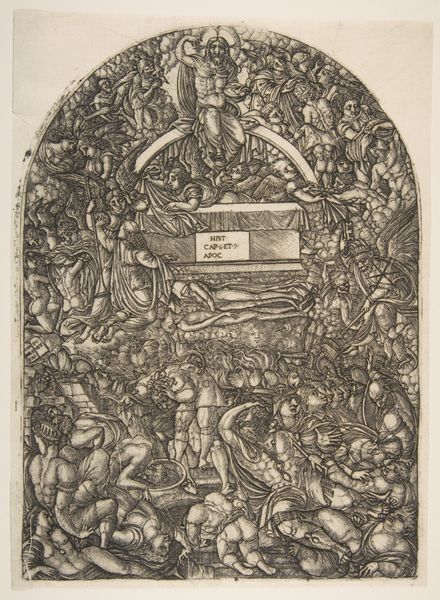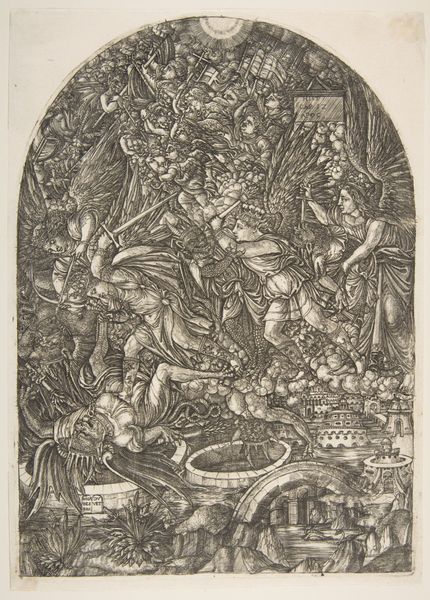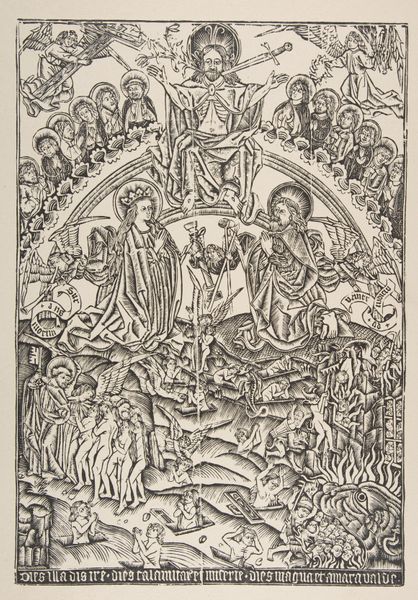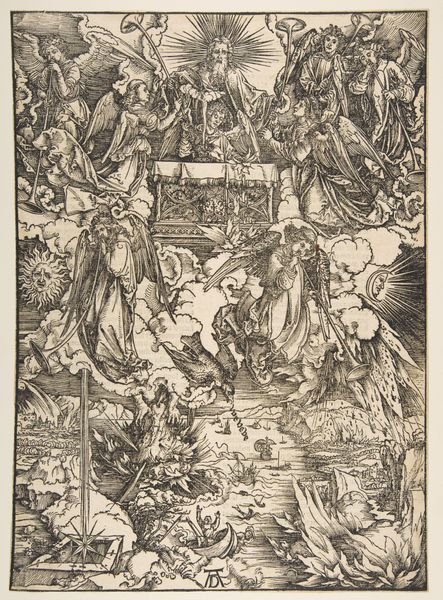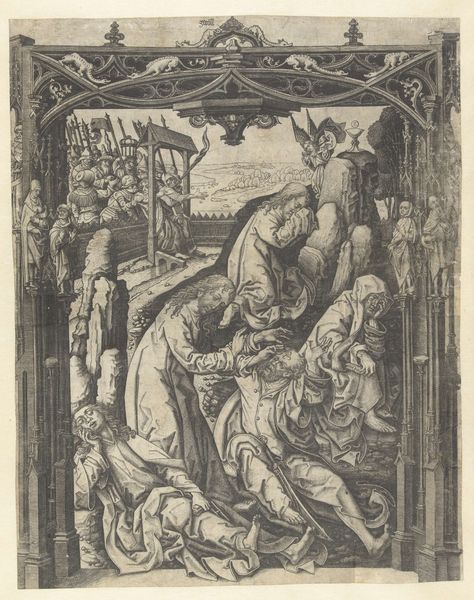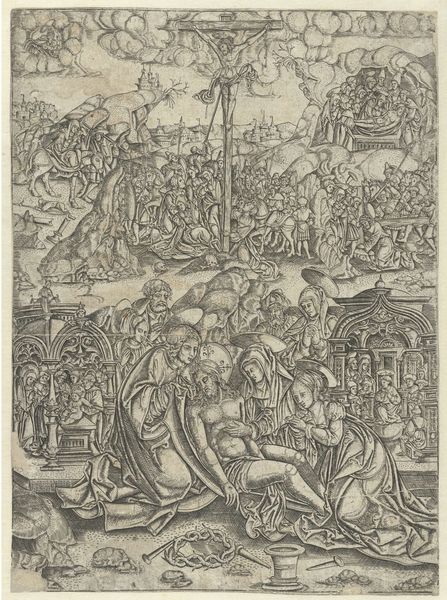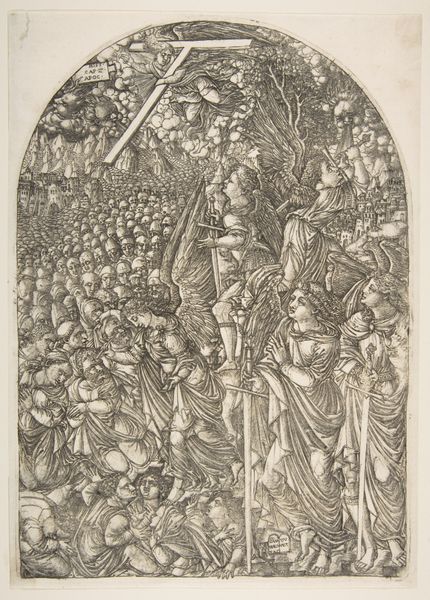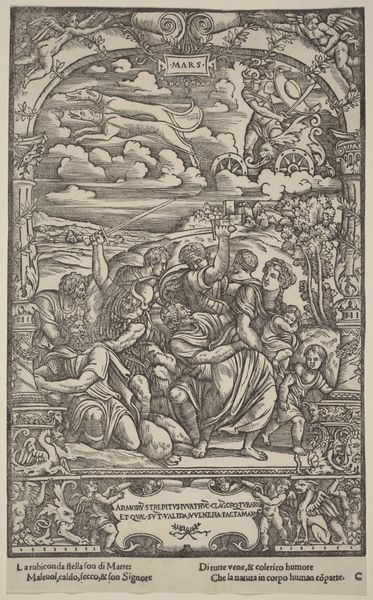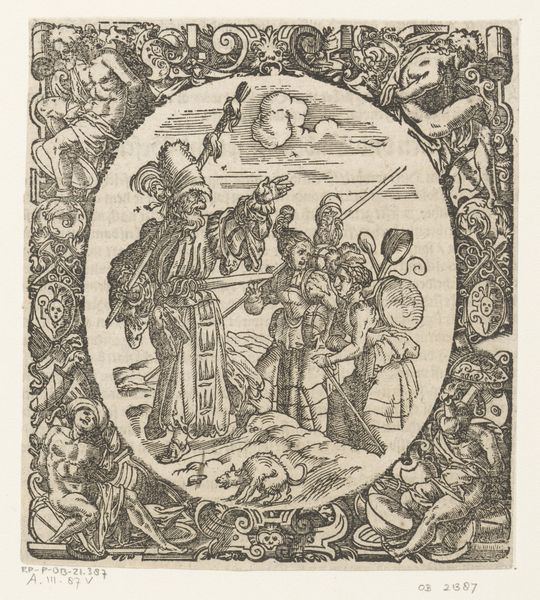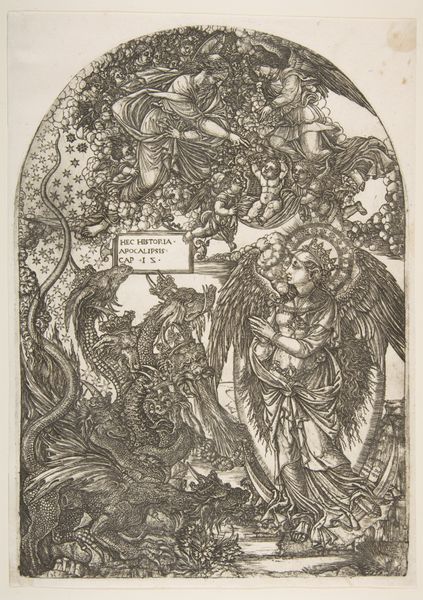
The Babylon Harlot seated on the Seven-Headed Beast, from the Apocalypse 1480 - 1570
0:00
0:00
drawing, print
#
pencil drawn
#
drawing
#
rippled sketch texture
#
light pencil work
#
ink drawing
# print
#
pen sketch
#
pencil sketch
#
pencil drawing
#
pen-ink sketch
#
men
#
pen work
#
pencil work
Dimensions: plate: 11 7/8 x 8 11/16 in. (30.1 x 22 cm) sheet: 12 1/4 x 9 in. (31.1 x 22.8 cm)
Copyright: Public Domain
Jean Duvet created this print, The Babylon Harlot seated on the Seven-Headed Beast, from the Apocalypse, using the intaglio technique, sometime between 1555 and 1561. Duvet incised lines into a metal plate, likely copper, with tools such as burins and needles, directly engaging the metal and physically cutting away slivers of the material. The plate was then inked, and the surface wiped clean, leaving ink only in the engraved lines. The image was then transferred to paper under the heavy pressure of a printing press. Duvet's virtuosity is evident in the intricate details and textures achieved through the precise control of the tools. But the process also imbues the work with social significance. Printmaking in the 16th century was linked to wider social issues such as the spread of information, religious reform, and political propaganda. The labor-intensive nature of engraving contrasts with the potential for mass production, reflecting tensions between craft and industrialization. Paying close attention to the materials and making processes allows us to appreciate the artist's skill, and the wider context of production and consumption.
Comments
No comments
Be the first to comment and join the conversation on the ultimate creative platform.
